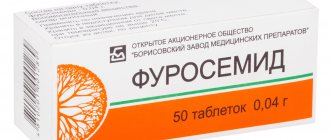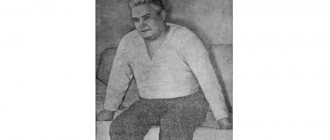Instability of blood pressure worries a lot of people. Some suffer from constant jumps in the tonometer readings up and down, others are bothered by severe low blood pressure, and still others suffer from a noticeable increase in the mercury column numbers on the tonometer. The latter situation is related to a hypertensive crisis. How does this pathological process manifest itself and what are its causes? Let's take a closer look at the types of hypertensive crisis.
Causes
Each stage of hypertension can provoke a hypertensive crisis. There have been recorded cases where the disease was observed in people who do not have health problems. But most often, this is a consequence of advanced hypertension in combination with atherosclerosis. If the symptoms of such an illness bother a person repeatedly, this is often the result of a negligent attitude to treatment or its complete absence.
Factors contributing to the development of the disease:
- hard physical labor;
- weather change;
- hormonal disbalance;
- refusal to take medications that help lower blood pressure;
- abuse of coffee, alcoholic beverages;
- eating salt and salty foods in large quantities;
- overexertion and stress.
The pathology that manifests itself against the background of atherosclerosis is a consequence of impaired blood circulation in the vessels of the cerebral cortex. Most often it develops in older people, and the disease itself is accompanied by many unpleasant symptoms. In old age, the disease is quite severe.
Important! Pathology is much more common in kidney dysfunction, diseases of the autoimmune system, characterized by inflammation of the arteries (polyarthritis nodosa), diabetes mellitus of various types, nephropathy, disorders of the immune system, characterized by inflammatory processes in organs and tissues (lupus erythematosus), as well as atherosclerosis of the aorta and its branches.
How can diagnostics be carried out?
The first thing people pay attention to is the blood pressure level itself. Indicators above 200 mm. rt. Art. - very high. The patient may be prescribed the following types of studies:
- Blood analysis. It is important to determine the level of cholesterol, glucose, triglycerides, etc.
- Analysis of urine. It is necessary to find out whether protein is present.
- Holter blood pressure monitoring. An excellent technique that allows you to obtain an assessment of pressure indicators throughout the day. Special sensors are placed on the patient, with the help of which monitoring will be carried out. The device takes measurements every 15 minutes. Thanks to this, it is possible to determine not only the patient’s condition, but also to evaluate the effectiveness of the treatment.
- Echocardiography. Helps examine changes in the heart and valve apparatus. Blood ducts in key vessels and in the heart chambers are also assessed.
- Electrocardiography. A popular low-cost, but at the same time effective diagnostic method in the field of cardiology. The heart function is analyzed.
- X-ray. Sometimes a chest x-ray is necessary. Stagnation in this area indicates a complicated crisis.
- Ophthalmoscopy. Detects swelling or hemorrhage in the area of the optic nerve.
- Ultrasound. The urinary organs (kidneys) are examined.
- CT scan. Carry out if there is a suspicion of brain disorders.
An examination is required to determine further treatment. In addition to visiting a cardiologist, you should also consult a neurologist and ophthalmologist.
Symptoms
The main sign of a hypertensive crisis is a sudden increase in blood pressure readings on a tonometer. When the mercury column is too high, a person’s cerebral and kidney circulation deteriorates, and the result of such changes in the body is cardiovascular disease. As a rule, many patients are brought to the hospital with a heart attack, stroke, acute coronary insufficiency and other diagnoses.
With this disease, pressure can reach 220/120 mmHg. But this is not the limit - sometimes there is a jump even higher.
Signs of pathology:
- fussiness, impulsiveness, shouting of phrases are manifested (all symptoms of acute mental illnesses expressed in motor activity);
- the patient feels an inexplicable feeling of anxiety and restlessness;
- signs of tachycardia noticeably develop (heart rate increases);
- the patient cannot breathe normally, he does not have enough air;
- the person starts to tremble, he begins to shiver;
- hands shake and tremble;
- the face turns red and swells;
- headache;
- vomiting and nausea.
Important! Complications may include: pulmonary edema, coma, thrombosis, acute renal failure, accompanied by an increase or decrease in urination.
As you can see, the symptoms of the disease vary, but the most common symptom is headache. As pathology develops, headaches are even divided into types: typical, atypical, and pain that occurs with malignant hypertension. The degrees of the disease also differ and can manifest themselves in different ways. So, what degrees and types of illness exist?
Basic information about the disease
Hypertensive crisis is a pathological phenomenon characterized by a sharp and sudden increase in systemic blood pressure to a critical level.
Moreover, the critical blood pressure level in such cases is individual. This depends on the person’s baseline blood pressure.
Important! The condition is an emergency and requires emergency care, otherwise severe complications may develop with damage to vital organs - the heart, lungs, and brain.
HA occurs suddenly and it is extremely difficult to predict its onset, so it is important to listen to your body. It is quite possible to prevent this phenomenon if you regularly prevent it.
There are quite a large number of reasons for the development of an attack . Most often, the phenomenon develops against the background of hypertension. In addition, stress, meteorological conditions, excessive alcohol consumption, kidney pathologies, diabetes mellitus, and atherosclerosis can be provoking factors.
Quite often, an attack can develop in hypertensive patients as a result of independent refusal or non-compliance with the regimen of taking antihypertensive drugs prescribed by the attending physician.
Symptoms depend on the type of hypertensive crisis that occurs in the victim. When there is a pressure surge, the most common symptoms are:
- anxiety;
- headache;
- chills;
- visual impairment;
- facial redness;
- nausea, vomiting.
Reference. You can learn more about the main symptoms of GC and their characteristics here.
After stopping the attack, the patient must undergo a rehabilitation course, following all the advice and instructions of a specialist. This is necessary to prevent relapses.
Read also: Medicinal herbs for hypertension
Pathology of the first type
The development of this type 1 hypertensive crisis is typical for patients with stage I and stage II hypertension. An attack of a sharp increase in pressure occurs suddenly, there are no warning signs. The duration of the crisis is 60–180 seconds.
Usually the patient is overtaken by a sharp pain, a grid appears before the eyes, which interferes with vision. At this point the patient becomes very agitated and his skin becomes mottled and changes color. There have been cases when the appearance of a rash was noted. During a crisis, the patient’s skin on the lips dries out and bursts. Body temperature rises, pulse and blood pressure increase.
Help with hypertensive crisis
General events
- take a horizontal position. If shortness of breath is present or appears, with the head of the bed elevated.
- psycho-emotional peace, sedatives (sedatives) according to indications. For example, tinctures of motherwort, valerian, Corvalol or valocordin. You can give warm, sweet and weak tea, which should be taken slowly, in small sips.
- Apply warm heating pads to the soles of your feet. In the absence of heating pads, the latter can successfully replace plastic bottles with warm water.
Attack of the second type
The second degree of hypertensive crisis is typical for patients with stage III hypertension. A crisis of this type lasts much longer - from several hours to 5 days. During this period, the patient is not able to cope with pain and discomfort. He suffers terribly from headaches, his head feels dizzy and heavy. In case of a hypertensive crisis of the 2nd degree, people experience nausea, vomiting, and are disturbed by drowsiness, but at the same time they cannot sleep. In addition, patients experience noticeable deterioration in hearing and vision. All these symptoms are reinforced by suffocation.
Patients appear to be very weak during this period. They may experience lethargy and lack of desire for various movements. The skin of the face takes on a blue tint, becomes dry and cold.
The pulse is usually slow, but can sometimes be slightly rapid. The readings on the tonometer are elevated, but lower than in grade 1 hypertensive crisis.
Important! Despite the fact that both degrees of the disease have the same symptoms, they nevertheless differ from each other.
Brain type
Often the result of a hypertensive crisis is a stroke. However, the shutdown of brain functions lasts for some time, and then they resume their activity. It is impossible to say unequivocally that a stroke must be preceded by a crisis. But this is often what happens - this is a fact. There are 2 types of cerebral crisis.
- I type. It is characterized by headache, vomiting, nausea. With it, increased pressure is noted in the temporal artery and retinal vessels.
- II type. More severe symptoms are observed that lead to loss of consciousness.
The symptoms of the second type are more consistent with the manifestation of a hypertensive crisis.
Possible complications and prognosis
Complications of this condition may include:
- organic brain damage;
- ischemic stroke;
- cerebral hemorrhages;
- acute heart failure;
- angina pectoris, accompanied by acute pain in the chest;
- dissection of the main aorta, which results in a breakthrough of its wall and massive internal hemorrhage;
- eclampsia in pregnant women.
All of these conditions are life-threatening and can lead to death.
Classification according to the mechanism of increased blood pressure
Hypertensive crisis can be divided into different types and types, based on different factors. According to the mechanism of pressure increase, there are: eukinetic, hyperkinetic and hypokinetic crises.
Hyperkinetic
Usually develops in stages I and II of hypertension. The patient does not show any warning symptoms; the crisis occurs quickly and without warning. This process is accompanied by an increase in cardiac output, as well as peripheral vascular resistance, which remains unchanged or decreases.
Hypokinetic
Stages II and III of hypertension are characteristic. The pathological process develops gradually. With this type of disease, peripheral vascular resistance increases and cardiac output decreases. This type is often a harbinger of a stroke.
Eukinetic
This type of crisis corresponds to stages II and III of hypertension and the secondary form of hypertension. A eukinetic crisis finds the patient unexpectedly, but its symptoms are not as pronounced as with the hyperkinetic type. This species is characterized by normal cardiac output but increased peripheral vascular resistance.
Prevention
To reduce the risk of developing a hypertensive crisis, it is necessary to follow preventive measures that are identical to measures to prevent hypertension. It is important to monitor your blood pressure and promptly begin treatment for hypertension. When pathology develops, it is necessary to know the cause in order to eliminate, if possible, a negatively affecting factor.
The main preventative measures are: rational nutrition, adherence to the regime, rest. Stressful situations must be avoided. Moreover, it is important to follow all doctor's instructions.











